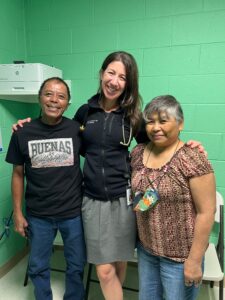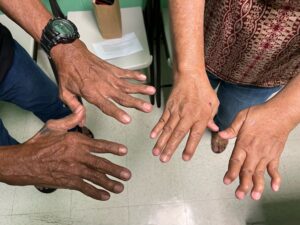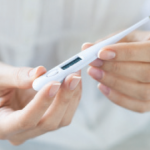“It might be lupus,” his PCP said. “A rheumatologist is visiting the island in a few months. I’ll place a referral.”
By the time Mr. A saw me, he was a shell of himself. His hands and feet were painful and swollen, forcing him to leave his job at the naval base. Worry about a potential lupus diagnosis led to crippling anxiety. He could no longer get through the day without alprazolam.
I pulled out a piece of paper and drew a bathtub. I explained the basics of urate-lowering therapy, the need for flare prophylaxis and target serum urate levels. “Gout is curable—it’s just a matter of getting you on the right medicines at the right doses, and staying on them,” I said.1
Then, I reassured him that his positive ANA test wasn’t clinically significant. I’ve never seen a grown man so happy. “You mean I don’t have ‘Anna’? Thank you, Dr. Sam!” he exclaimed.
Example 2: Later that afternoon, I met Mr. and Mrs. G. They’d been married for 31 years and both had erosive seropositive rheumatoid arthritis (see Figure 1). I was the first rheumatologist they’d ever met—a fact to which their hands could attest (see Figure 2). They were taking methotrexate, but it simply wasn’t enough. They needed biologics—decades ago.
What struck me most about these two wasn’t their matching ulnar deviations, but their positivity. “It’s not so bad, Doc. We barely notice the pain anymore; it’s just part of life. And we have each other,” Mrs. G said.
On the other hand, I felt incensed. There were medications out there that could help. They simply couldn’t access them.
Access
If the people of Guam are U.S. citizens, why is access such a problem?
For one thing, Guam is really far away. It’s a federally designated Health Professional Shortage Area (HPSA) because there just aren’t many specialists on the island.2 When I said that I was flying to Guam that weekend, I literally meant the entire weekend. I departed Austin, Texas, at 8 a.m. on Saturday morning. I arrived in Guam at 10 p.m. on Sunday night.
Lack of insurance is another barrier. An estimated 23% of people on Guam are uninsured or underinsured, and they don’t qualify for most drug company-sponsored patient assistance programs that provide free biologics to stateside residents.2,3 Even for patients with private health insurance, high co-pays often render biologics cost prohibitive.




